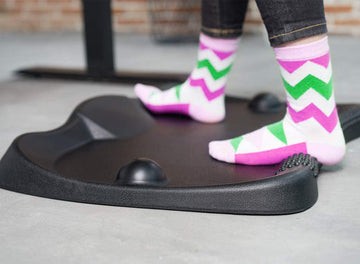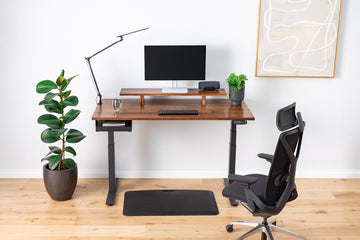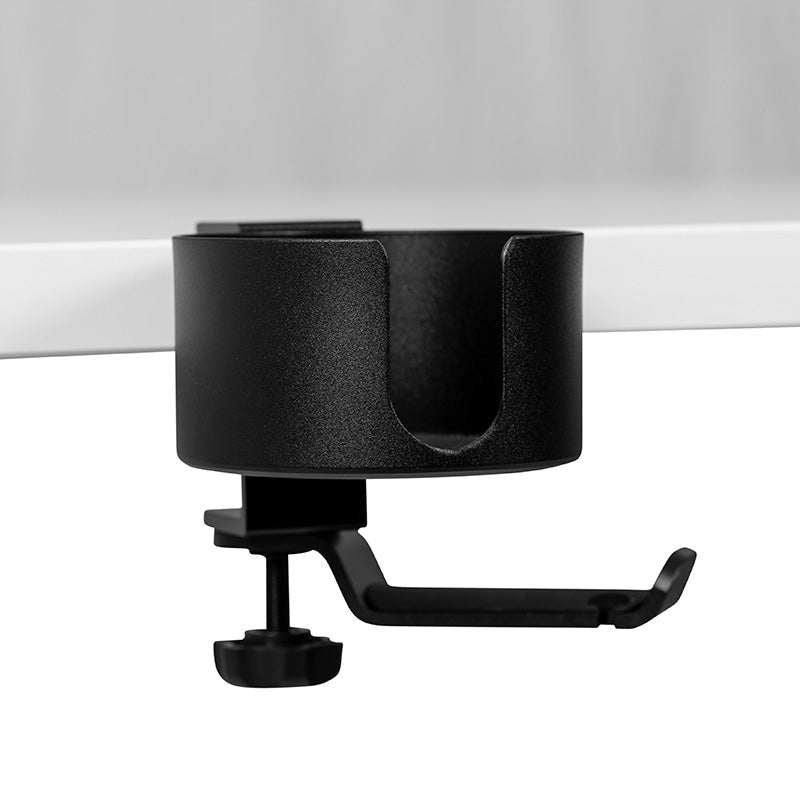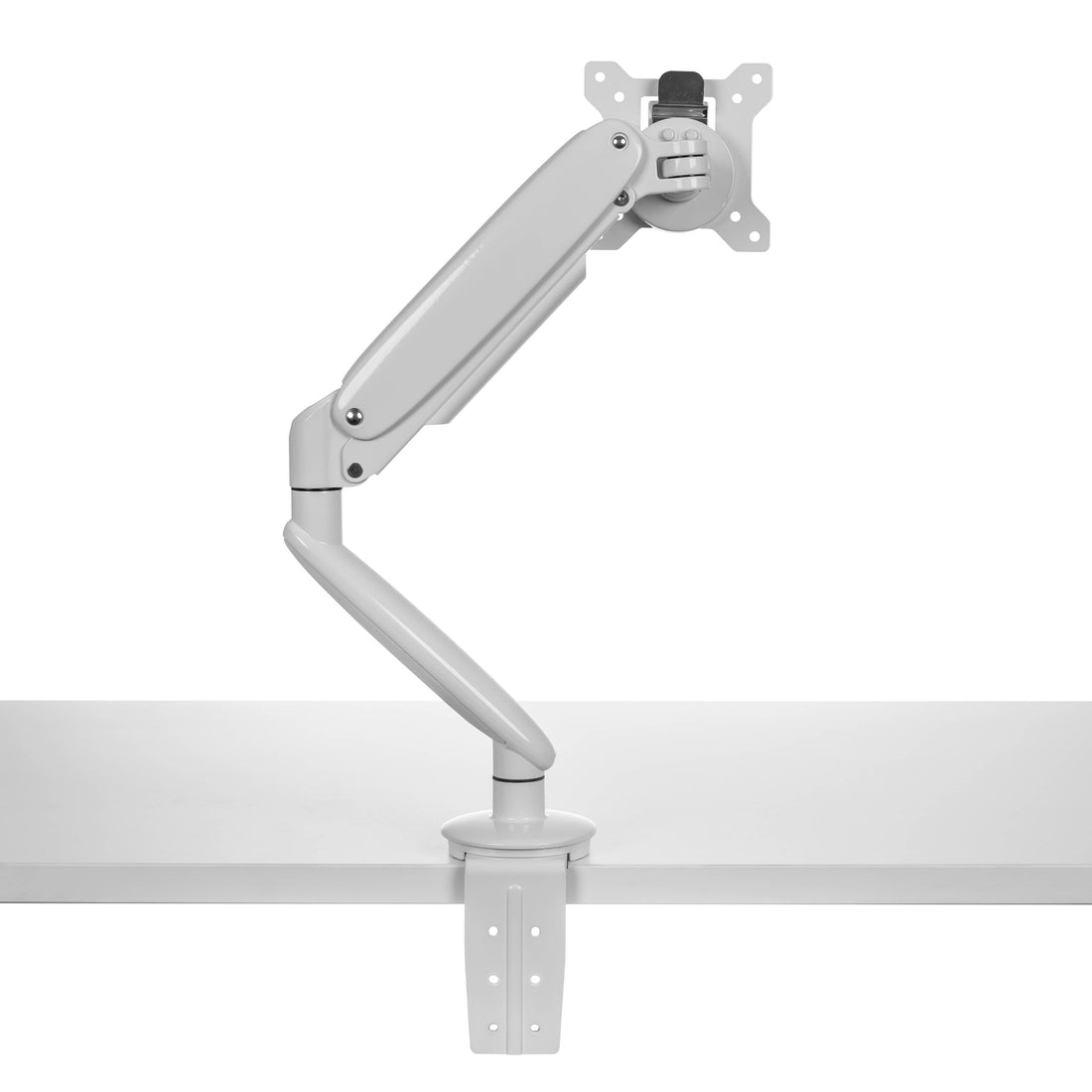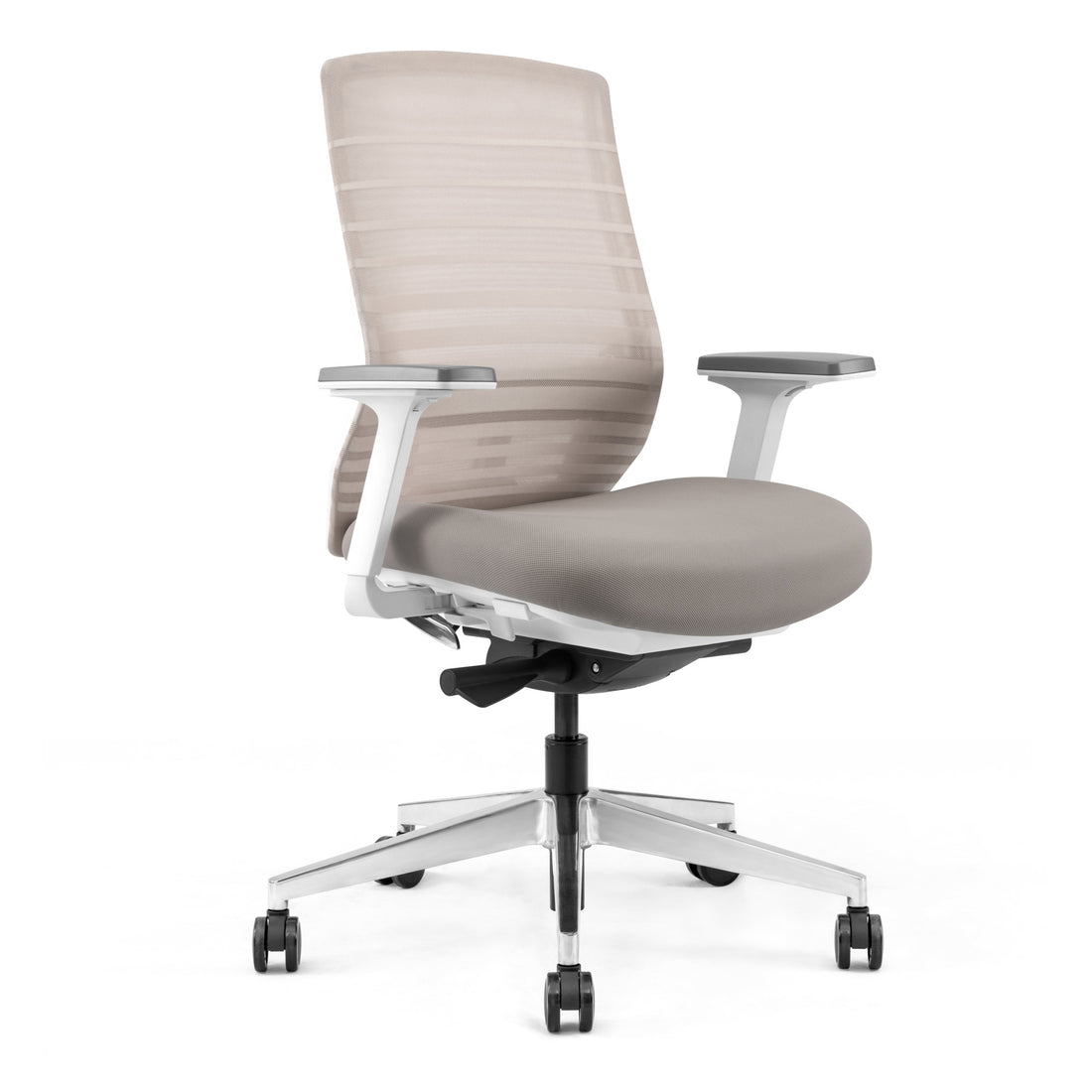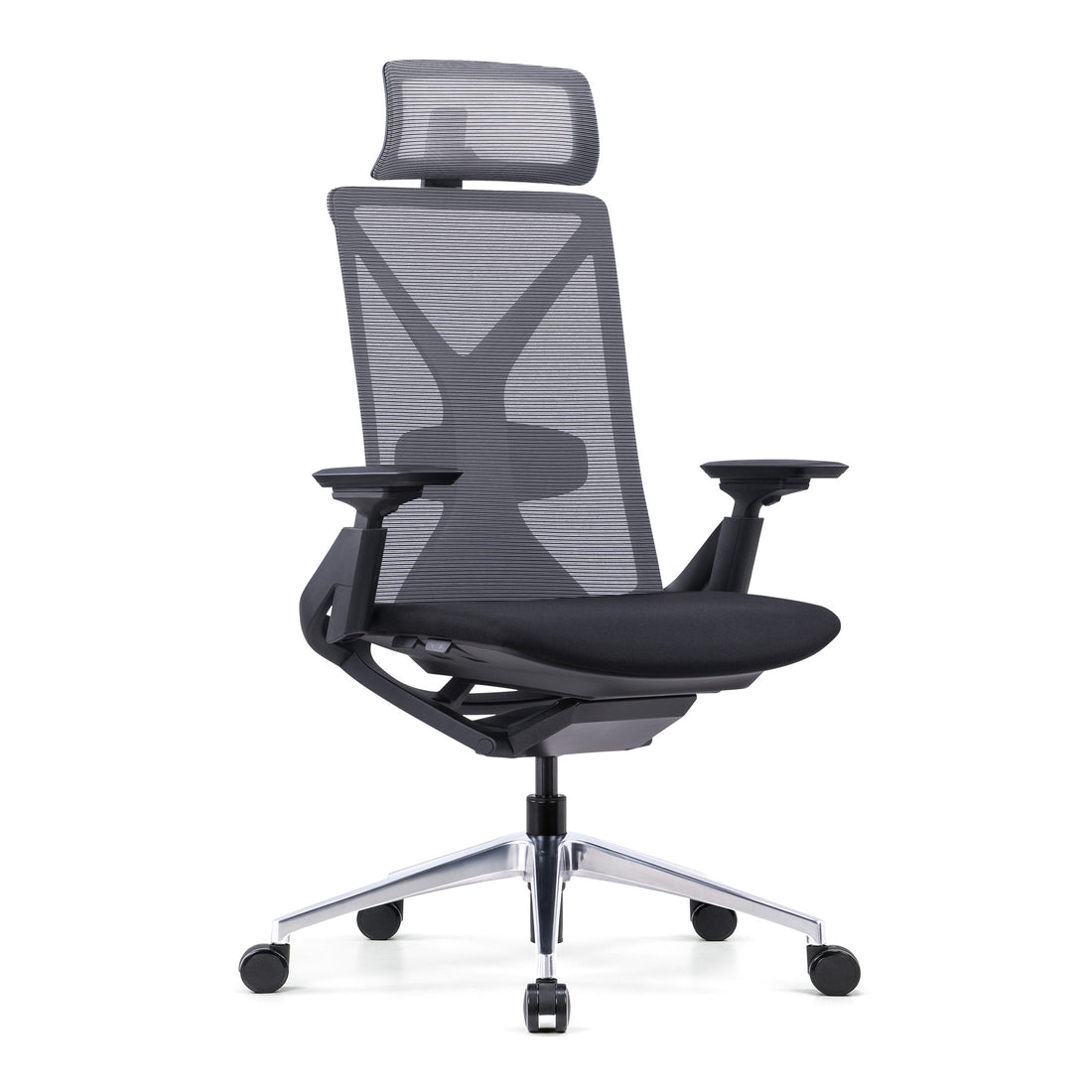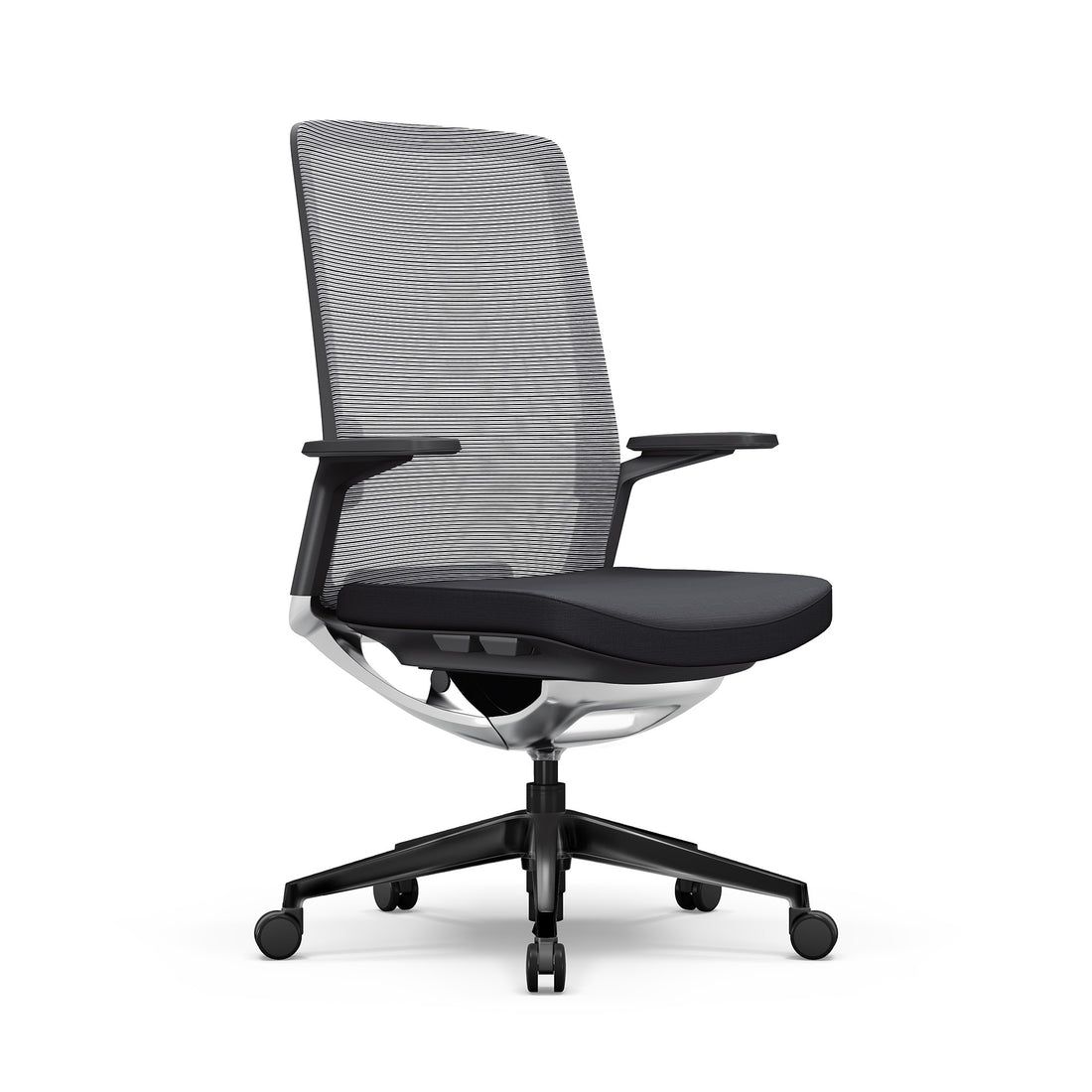In the world of office ergonomics, a standing desk balance board or an anti-fatigue mat are two options that may help alleviate your aches and pains while working.
Looking to discover which is right for you in the standing desk balance board vs mat debate? Today, we're going to fully explain each of these, along with the pros and cons they offer. By the end of this in-depth guide, you'll know whether to go with a balance board or anti-fatigue mat for your office setup!
What’s The Purpose Of A Standing Desk Balance Board?
When standing becomes uncomfortable or painful, you may benefit from a standing desk balance board to help you shift your weight while working. Balance boards can help improve your overall coordination and control when you’re improving your balance — both of which are useful in helping to manage stress and improve agility.
How to Choose a Standing Desk Balance Board
However, most balance boards tend to be complicated and tricky to master.
When shopping for a balance board, it’s also essential to consider the weight limits. Each type of balance board has a different weight limit.
Balance boards are also suitable for only some members of your family. Since there is an inherent risk of injury with balance boards, people with more mobility should be the only ones using a standing desk balance board for long periods of time.
Standing Desk Balance Board Benefits
Curious about the standing desk balance board benefits? Check them out below:
- Balance improvement — Even while working for hours, you can easily work on your mobility and agility with a standing desk balance board.
- Increased focus — Because you have to maintain your balance while working, you’re naturally more focused while using a standing desk balance board.
How Versatile Is A Standing Desk Balance Board?
Unfortunately, a balance board isn’t very versatile. If you want to use a balance board, you’ll have to maintain a certain degree of focus throughout the day. If your focus wavers, you may end up falling and hurting yourself.
The best way to use a balance board is for a couple of minutes a day when your workload is somewhat lessened and you have some free time available.
What Is An Anti-Fatigue Standing Mat?
An anti-fatigue standing mat is a shock-absorbing mat usually made from rubber designed to support your feet and legs when standing at your workstation. It improves comfort and reduces fatigue allowing you to get the maximum benefit from your standing setup. The mats are varying degrees of thickness but most are between 1.5 - 3cm.
What’s The Purpose Of An Anti-Fatigue Mat?
An anti-fatigue mat serves a similar purpose to a balance board. It helps to make your standing experience a pleasant and comfortable one.
This material is great if you have to stand on a hard surface, such as concrete, timber, or firm carpets. It’ll keep your sensitive feet feeling comfortable throughout the day.
Typically, these mats are also easier to use. They offer a less intense standing experience than ordinary balance boards. You also don’t have to worry about weight limits when shopping for the perfect anti-fatigue mat. Since they aren’t an exercise tool, like a balance board is, they are safe for the entire family to use.
Who Should Use An Anti-Fatigue Standing Mat?
They are intended for people who stand for portions of the day on non-supportive surfaces. We find that anti-fatigue mats are perfect for anyone who isn’t allowed to use balance boards at the office. You don’t have to worry about falling when using an anti-fatigue mat.
Moreover, anti-fatigue mats provide fantastic benefits. Keep reading to see which of these are the most important to you.
Anti-Fatigue Mat Benefits
Here are some benefits of getting an anti-fatigue mat while working:
- Muscle soreness reliever — An anti-fatigue mat can help alleviate some of the soreness that comes with using a standing desk for long periods of time.
- Feet comforter — An anti-fatigue mat also ensures that your feet have a softer, more comfortable environment while standing.
- Easy-to-use solution — When using an anti-fatigue mat, you don’t need to worry about your concentration levels wavering and falling over. They provide a comfortable experience, no matter what you do.
Increased Comfort = Longer Standing Times
Standing in the same place for a prolonged period can become uncomfortable. This feeling can be exaggerated by work-related stress leading to fatigue of the mind and body. These cushioned mats combat and reduce the discomfort of the feet and joints by providing a softer surface to plant your posture, which enables you to comfortably stand for longer periods.
We recently trialed one at our physiotherapy clinic and a colleague of mine was quoted stating, “This is like standing on a cloud”. Joanna has been known for her dramatic statements in the past, but this time I agreed!
Improved Circulation
Compared to a normal floor, anti-fatigue mats offer a softer cushioning surface. As the surface is soft and malleable, the feet need to constantly adapt to it, causing the muscles to contract and relax. This encourages the feet, and therefore legs and body to move. This movement activates the venous pump, which increases the blood flow throughout the body and helps to prevent the accumulation of blood in the ankles and feet.
Improved Posture
It is common for people to slouch when standing. Even more common when there is a computer in front of them that they can rest their arms on. However, a good quality anti-fatigue mat can help maintain a healthy posture by ensuring the body’s weight is evenly spread throughout the feet. The softer surface also promotes regular movement of the small muscles of the feet improving the arch support and therefore ankle, knee and hip position.
Now that we understand the purpose and the benefits of each, let’s look at how versatile an anti-fatigue mat can be.
How Versatile Is An Anti-Fatigue Mat?
An anti-fatigue mat is far more versatile than a balance board. Unlike a balance board, you don’t have to maintain a certain concentration level when using it.
The anti-fatigue mat can also help you maintain a healthy posture. When using an anti-fatigue mat, you spread your body’s weight evenly throughout the feet.
Since these mats are pretty lightweight, it’s easy to pick them up and move them out of the way when you want to lower your standing desk to sit down. Even while sitting down, you’ll still be able to use an anti-fatigue mat.
Should I Wear Shoes? Are Bare Feet Better?
Ideally, you should wear proper footwear that provides the right arch support to get optimum benefits. However, because the standing mat is soft, it does provide some support.
Standing Desk Balance Board Vs. Anti-Fatigue Mat: Which Is Better?
Here’s a quick roundup of each:
| Standing Desk Balance Board | Anti-Fatigue Mat |
|
|
Suppose you require an intense workout session while at your standing desk, then a balance board is a great choice. It can help you maintain your fitness levels and improve your agility.
However, for long periods of hard work, when you need to perform at your utmost best, you have no choice but to go with an anti-fatigue mat.
An anti-fatigue mat can help you perform at your best and increase your endurance over time. It’s also pretty accessible to a wide variety of people, no matter their fitness levels.
How To Maximise The Benefits Of An Anti-Fatigue Standing Mat
Although standing is a much healthier position than sitting, avoid standing for excessive periods. Especially if you're new to the standing desk revolution. A regular change of position cannot be understated.
Buckley et al. 2015 recommend workers to initially aim for two hours standing per day, eventually progressing to a total of four hours per day. Anti-fatigue standing mats assist in this change between sitting and standing. We recommend the 50:10 rule: for every hour, stand or sit for 50 minutes followed by 10 minutes of movement.
Whether you are sitting or standing, ensure your workspace is ergonomically designed to reduce your risk of injury and promote a happy day's work!
Shop For Anti-Fatigue Mats At UpDown Desk
UpDown Desk offers a quality anti-fatigue mat at a very affordable price. This product can significantly improve your experience of using a standing desk and help you stand comfortably for longer.
Looking for expert tips on how to make the most of your standing desk setup? Dive into our blog, where you'll find valuable insights on topics such as the benefits of using a standing desk and the best standing desk posture guide. We're all about providing you with the knowledge and tools you need to transform your workspace into a safe space for your body to stay productive and healthy.
But that's not all! We also invite you to explore our ergonomic office chairs and PRO series standing desks, perfect companions for your standing desk balance board or anti-fatigue mat. These products are meticulously crafted to enhance your workspace and promote a healthier, more active lifestyle.
Upgrade your office experience today with UpDown Desk. Explore our range of products and immerse yourself in a world of ergonomic excellence. Make the change now for a happier, more productive work life.
Explore our range of products and immerse yourself in a world of ergonomic excellence. Make the change now for a happier, more productive work life.

